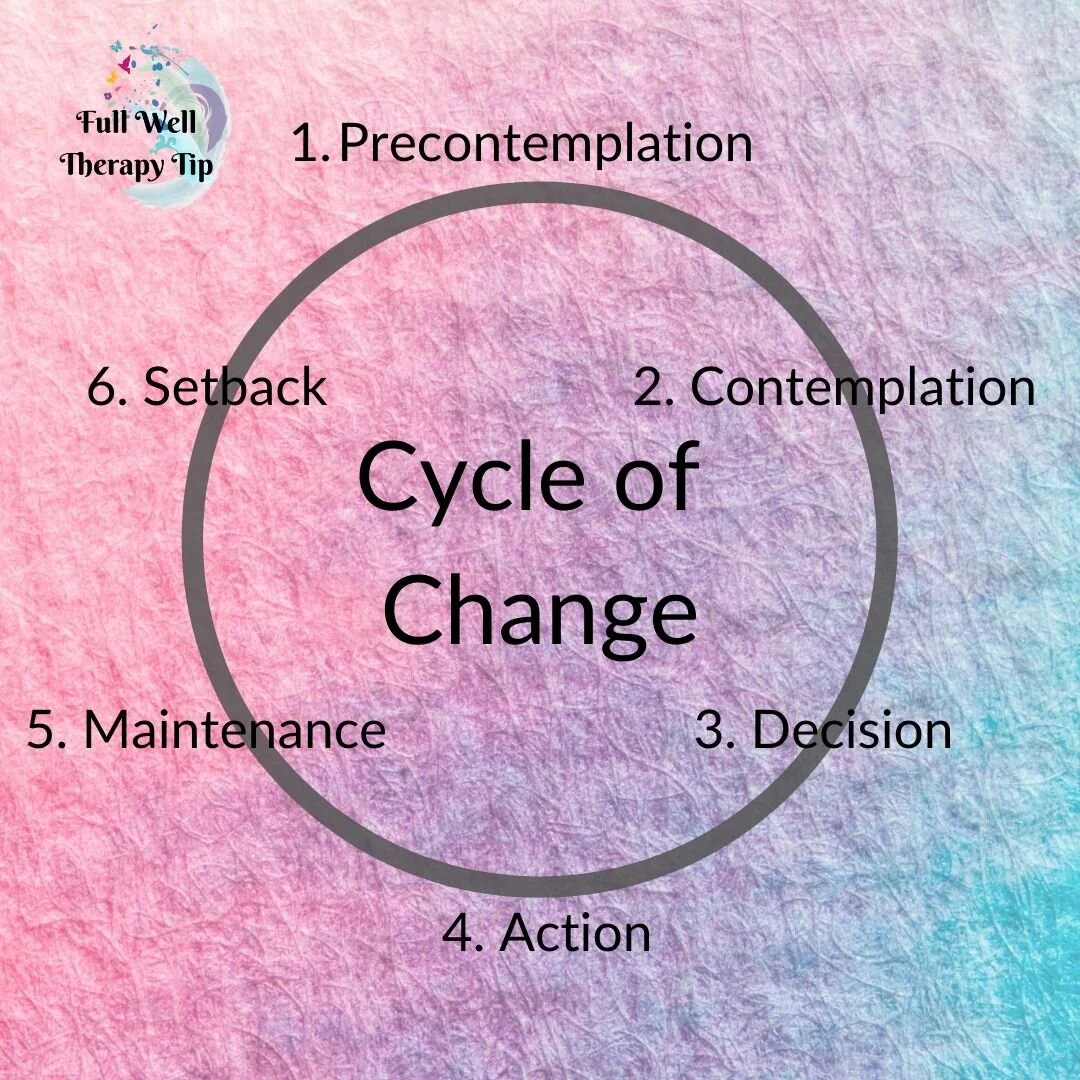The Cycle of Change
There are several things that we may want to change in our lives. You may have maladaptive coping mechanisms, such as substances, that you’re not happy with. Or the same pattern of relationship dynamics that end up being hurtful to you in the end. Even your daily routine to may be something you want to change, to include elements of self care or self investment.
Good news is that change is easy. Bad news is that maintaining change can be difficult.
Thankfully, there is plenty of research on the mechanisms of change. Although most of the research is concerning the change from substance addiction to sobriety, the research can be applied to change in most areas of your life. Let’s apply some of this research together.
Think about something in your life that you want to change.
Now, take a moment to identify where you fall on the Stages of Change (first introduced by DiClemente and Prochaska):
1. Precontemplation
This is the stage when you don’t yet know that this is something you want to change. Maybe others in your life may identify an element that is unhealthy and could benefit from change, but you don’t share their perspective.
2. Contemplation
A specific element in your life is now in your conscious awareness as something you may want to change. You haven’t made a decision what to do about this, one way or the other. You are simply aware of the issue.
3. Decision
This is the stage you make a decision what to do. Maybe you decide to maintain the status quo (in which case you would go back to stage 1), or you decide to take action to make changes, which takes you to the next step.
4. Action
You are taking active steps to manifest a change in your life. Whatever those steps are, you are in movement.
5. Maintenance
Possibly the hardest stage out of them all, this stage is about maintaining the changes you’ve made in the previous stage.
6. Setback
Though not included in the official original Stages of Change by DiClemente and Prochaska, this is an important stage, because there will invariably be setbacks to the same habits as before. Including setbacks in the Stages of Change gives us the permission to practice grace and kindness to ourselves when we inevitably slip up. If you make a mistake, that’s ok! The mistake was already in the plans.
Wherever you are on the Stages of Change, accept that wherever you are is ok. You can cycle through these stages as many times as you need, and that would still be ok. The Stages of Change are not linear, rather they are cyclical, because that is the nature of human tendencies - we are evolving and dynamic beings. There is no one particular step that you MUST be at, all the time. It is unnatural to expect yourself to stay static in all things, and the same applies to change.
Once you have identified where you fall on the Stages of Change for a particular issue, think about what you can do to move to the next step. Is it rallying the people around you for support to move from 2 to 3? Or being open to hearing others’ feedback to move from 1 to 2? Whatever they are, you can take the steps to put yourself in motion.
Check back for a Part 2 on How to Change to further support your endeavors to change!
